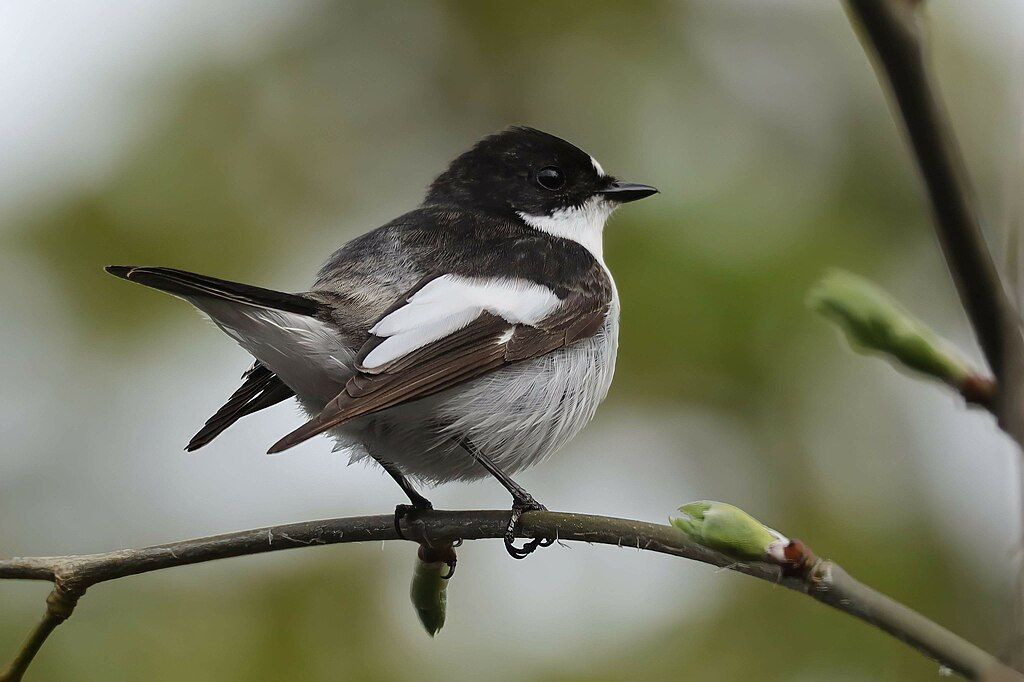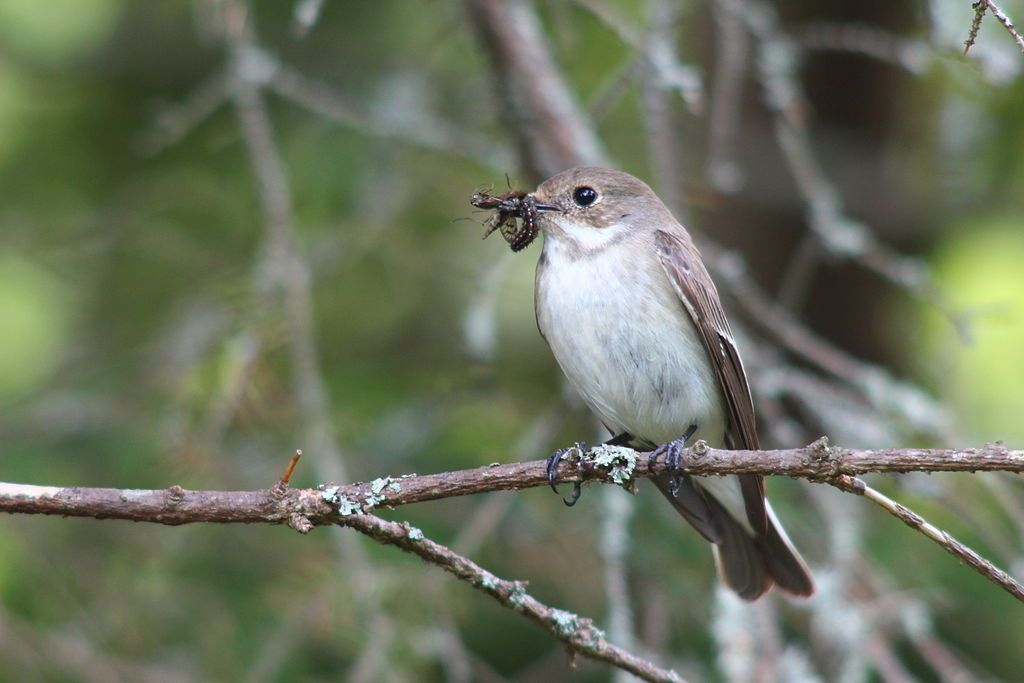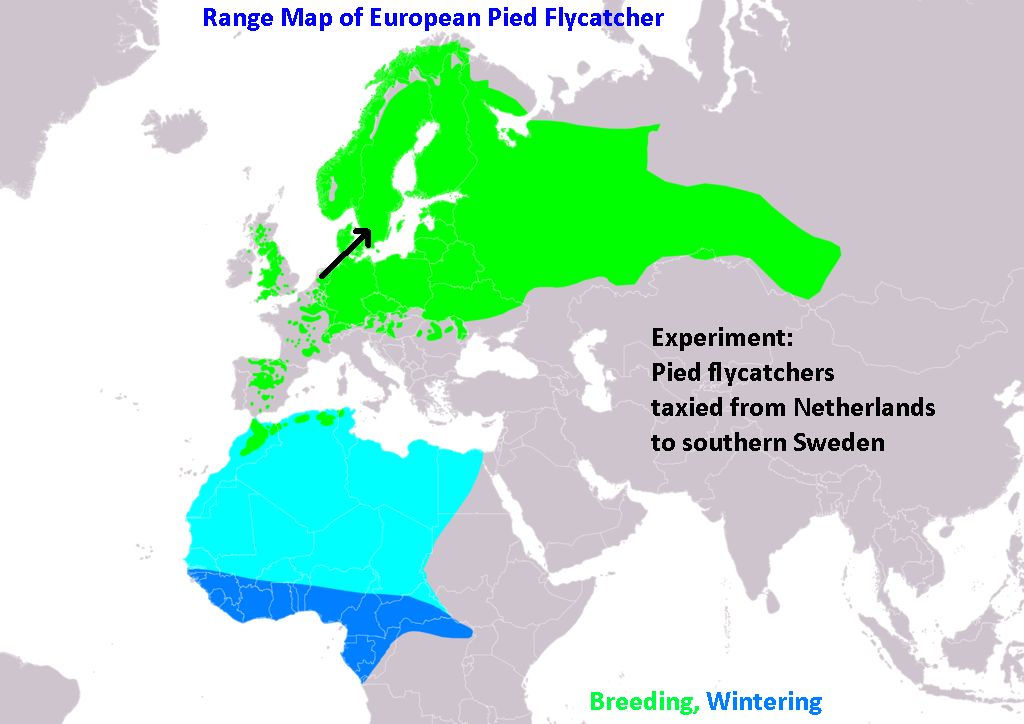
9 October 2023
Birds like the European pied flycatcher (Ficedula hypoleuca) that winter in the tropics and southern hemisphere do not use weather clues to tell them when to fly north in the spring. Instead they cue on changing day length and return at the same time every year. But as Earth’s climate changes, spring comes weeks earlier than it used to and their migration timing is out of sync. Scientists in the Netherlands decided to give a few lucky birds a lift (a Lyft?) to Sweden and it made all the difference.
Pied flycatchers prefer to nest in or near oak trees where their nesting season is timed to correspond with the peak of caterpillar season. Unfortunately, spring is two weeks earlier now in the Netherlands, pied flycatchers arrive too late and have locally experienced a 90% decline.

The old timing of Netherlands’ spring is now found in southern Sweden so scientists at University of Groningen in the Netherlands and Sweden’s Lund University decided to see what would happen to migration and nesting success if a few pied flycatchers were transported (by car!) from the Netherlands to suitable habitat in Sweden.
Anthropocene Magazine reports, “For three springs, starting in 2017, scientists from the University of Groningen in the Netherlands and Sweden’s Lund University caught newly-arrived Dutch female pied flycatchers and drove them by car to a nesting spot 570 kilometers (354 miles) away in southern Sweden that was already home to other pied flycatchers.”

The experiment was wonderfully successful. The Netherlands’ females were in sync with the food supply and were twice as prolific as their Swedish counterparts who were locally out of sync. After spending the winter in Africa the former-Netherlands females returned to Sweden and so did their offspring!
Later the research team proved that migration timing is genetically inherited in European pied flycatchers by taxiing a few eggs laid in the Netherlands to Swedish nests. Those offspring returned to Sweden the following spring on the Netherlands timing.
Taxi service cannot be the answer to out of sync migration but birds are adapting on their own. During the study, banding still continued at Netherlands nests and some of those youngsters were found nesting in Germany, halfway to Sweden. They flew there on their own.
Read more about the taxi ride experiment in Anthropocene Magazine: For some birds, a “taxi” helps recalibrate out-of-sync migrations.
(photos and map from Wikimedia Commons; click on the captions to see the originals)
That is so interesting Kate. And thanks for the Anthropocene Magazine !! I never heard of it. Thank you.